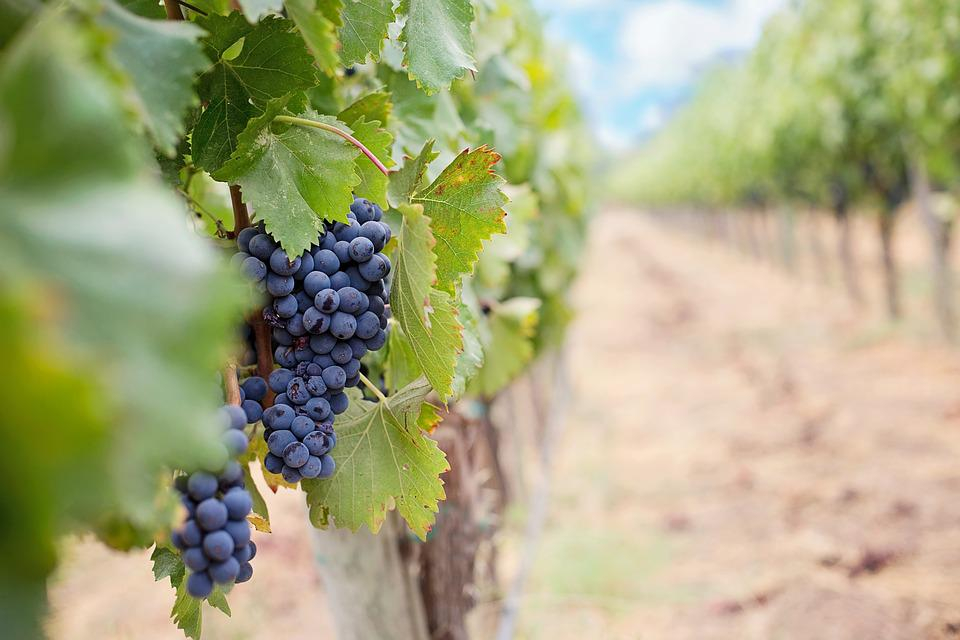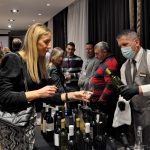As Morski writes, it hasn’t really rained in the Zadar hinterland for two months now, and the ongoing drought is severely harming both local farmers and winemakers, especially in Nadinsko polje, the most ecological vineyard in all of Croatia. Young vineyards with white varieties growing there suffered the most, and if there is no rain in the near future, the harvest will also be worse, and due to the lower yield, there could be problems in the wine cellars as well.
”There’s a small amount only, it’s pretty miserable. The rest [of what we have] is as it was a month ago, nothing is developing, it isn’t getting any colour to it and it should already be turning yellowish so that you can see that it is ripening, but it isn’t doing so because these leaves have been burned,” pointed out winegrower and winemaker Tomislav Glavic.
Glavic planted a Marastina vineyard in the nutrient-rich mud here five years ago. After last year, when the crop was affected by extremely cold temperatures and adverse conditions, this year should have been very good.
”This is our autochthonous variety of Marastina which I had very high hopes for. Last year, everything was frozen, there weren’t even any grapes to speak of. This year the harvest was meant to be excellent, it should have been one of the better vintages. Until a month ago, everything was fine,” he said. The situation is the same in the nearby vineyard of Sime Skaulj in the Zadar hinterland. Both his varieties suffered.
”This is a young three-year-old plantation that should produce extremely high-quality wines, however, it will be difficult to get a quality wine from here now. There’s been no photosynthesis, no ripening, no sugar in the grapes, even though these are varieties that achieve very high sugars, but this year that isn’t going to happen,” said Skaulj.
Droughts in the Zadar hinterland, scorching, damagingly high temperatures and storms this summer have all been a fatal combination for these young vineyards.
”We had days when the temperature was 45 and there hasn’t been a single drop of rain here since June the 9th. Actually, we had about four tiny drops ten days ago, but that’s neither here nor there,” said Glavic.
”This vineyard needs about 30 litres per square meter. If 30 litres of water had fallen here back at the end of July, it would have been amazing. We don’t need a lot of water here, but we don’t have a lot of it either,” explained Skaulj.
”The annual requirements of the vines in terms of precipitation are somewhere from 650 to 850 litres of rain water. From April the 1st to July the 30th, we had somewhere around 176 litres with a very unfavourable precipitation schedule. We’ve actually got a situation in which these bunches have been exposed to very harmful UV radiation,” said Zvonimir Vlatkovic from the Croatian Ministry of Agriculture.
If there is no serious rainfall soon, even though the vines have deep roots and are more resistant to drought, even the older, well-established vines will feel it. The harvest from the young plantations could be below average, and the quality could also come into question.
There are about 1,330 hectares of vineyards in not only the Zadar hinterland but spanning the entire territory of Zadar County. All of them have been constantly exposed to extreme temperatures. The situation is better in those that have an irrigation system, although they’re also struggling to maintain an average and high-quality crop this year. In recent years, Zadar’s local winemakers have made a big step forward when it comes to quality. The market recognises and acknowledges them, and it would be much easier to maintain that level of quality if the plantations didn’t depend solely on the whims of nature, which is often cruel.
The straw for not only the winemakers of the Zadar hinterland but for winemakers up and down the country could be EU funds. In the new programme period starting in 2023, the emphasis is, among other things, on irrigation systems, as reported by HRT.
For more, make sure to check out our dedicated lifestyle section.












